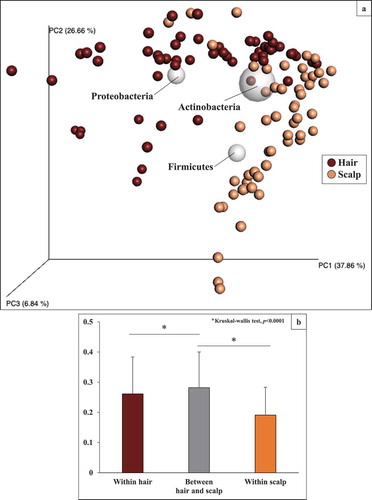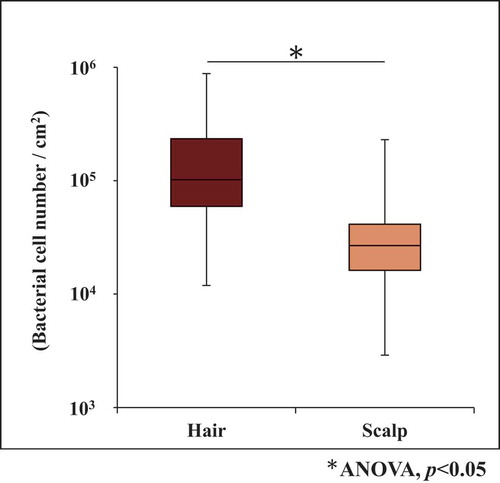Figures & data
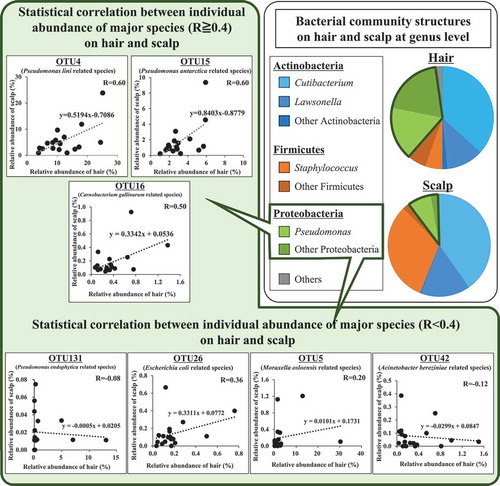
Table 1. Summary of differences in abundance and correlation of bacterial community between hair and scalp
Figure 2. Alpha diversity of bacterial community on the hair and scalp, based on (a) observed OTU and (b) Shannon index. The values are obtained from clustering of 1,000 reads per sample
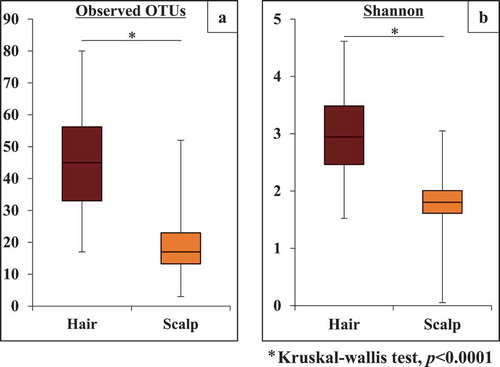
Figure 3. The average relative abundances of the major phyla in bacterial community structure on hair and scalp. The different alphabets mean that there are significant differences at comparison of each bacterial phyla between the sites (Kruskal-wallis test, p < 0.01)
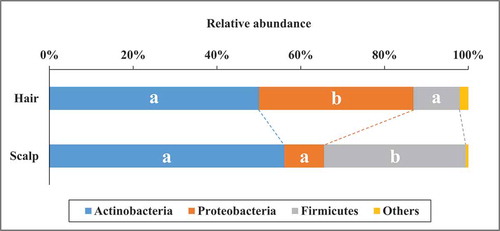
Figure 4. Phylogenetic tree and abundance heatmap of the major 13 OTUs commonly found in all 18 individuals
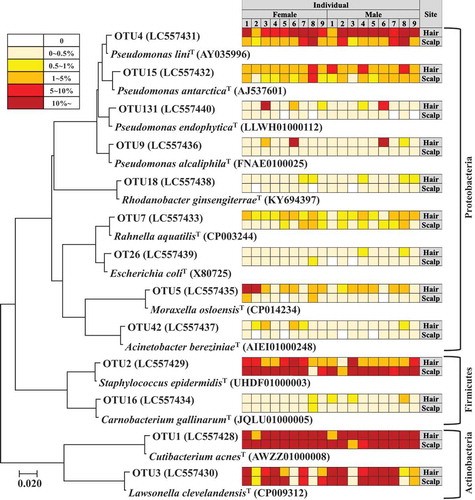
Figure 5. Comparison of relative abundance of most major five OTUs between hair and scalp. (a) relative abundance of OTU1 related to Cutibacterium acnes, (b) OTU2 related to Staphylococcus epidermidis, (c) OTU3 related to Lawsonella clevelandensis, (d) OTU4 related to Pseudomonas lini, and (e) OTU15 related to Pseudomonas antarctica.
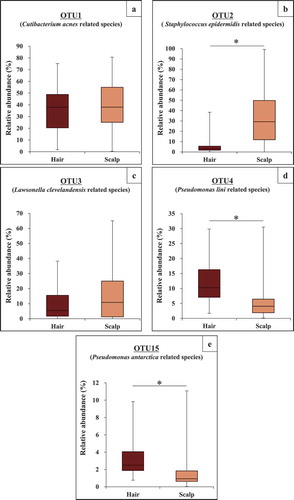
Figure 6. Correlation of relative abundance of most major five OTUs between hair and scalp. (a) OTU1 related to Cutibacterium acnes, (b) OTU2 related to Staphylococcus epidermidis, (c) OTU3 related to Lawsonella clevelandensis, (d) OTU4 related to Pseudomonas lini, and (e) OTU15 related to Pseudomonas antarctica.
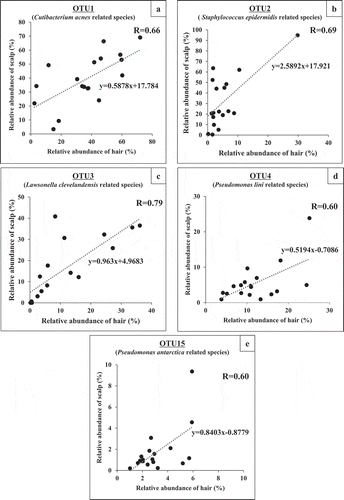
Figure 7. Beta diversity of bacterial community structure on hair and scalp in 108 samples from eighteen volunteers and their biplot analysis analysis at phylum level. (a) The PCoA plots based on the weighted UniFrac analysis are shown. (b) Comparison of weighted Unifrac distances within and between hair and scalp samples
